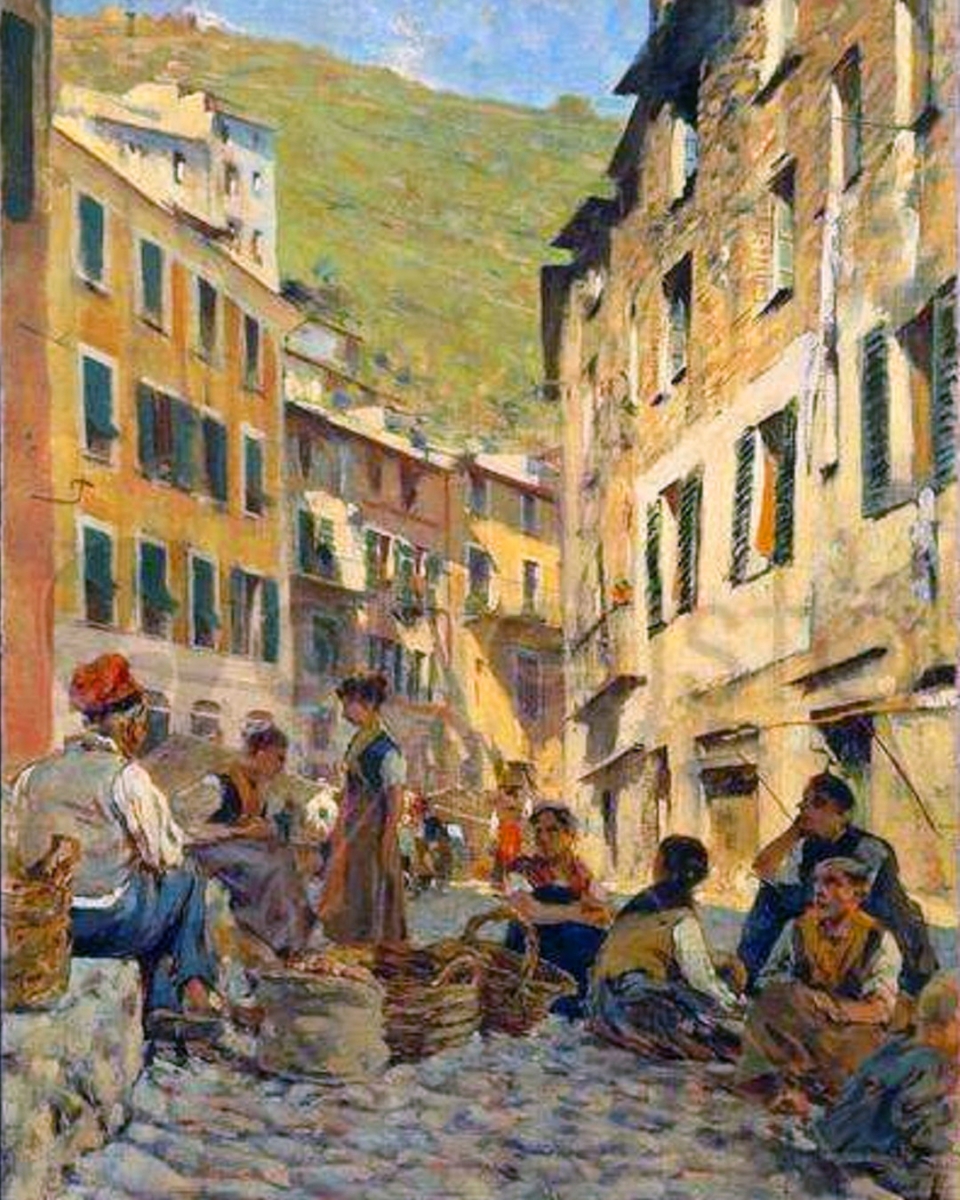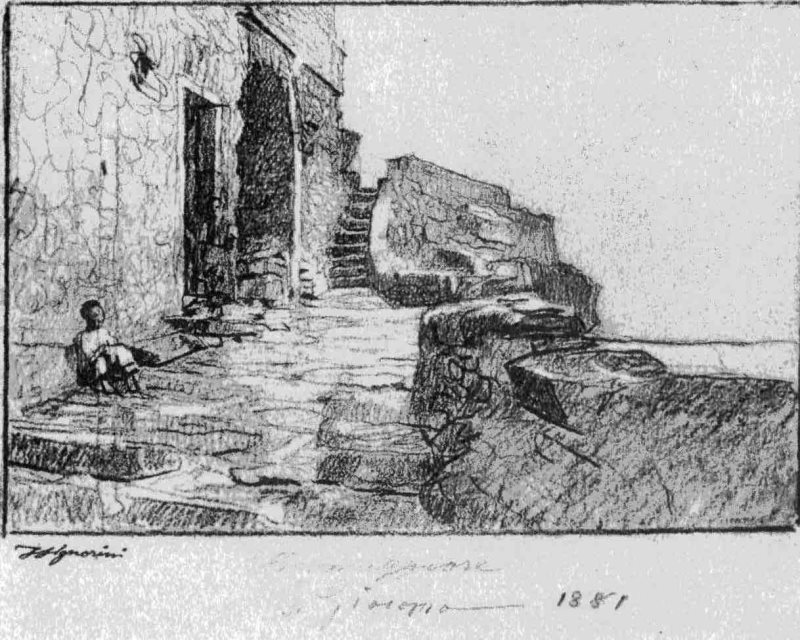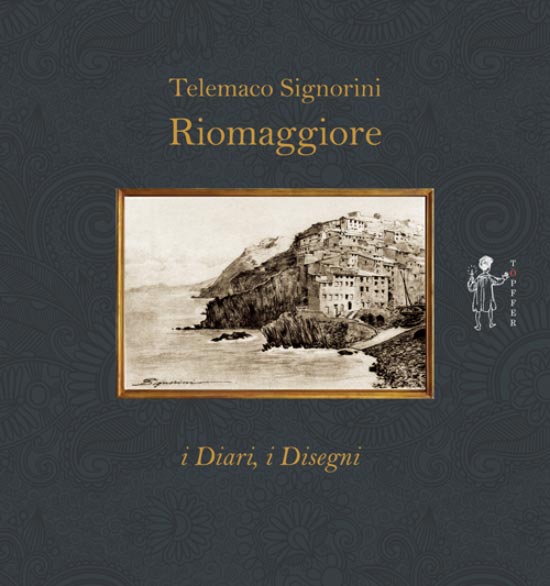Telemaco Signorini (1835 – 1901), who was a key figure in the Macchiaioli art movement, loved the Gulf of Poets and Riomaggiore in Cinque Terre. Born in Florence, he decided to study painting encouraged by his father Giovanni Signorini, who was a court painter for the Grand Duke of Tuscany.
In the second half of the 1800s, Telemaco Signorini established himself in La Spezia, Liguria, to pursue his pictorial studies on the interaction between light and shadow. He believed that the shores of the Gulf of Poets offered the ideal conditions for refining the painting technique that the so-called Macchiaioli were defining. This group of Italian painters strayed from the antiquated conventions taught by the Italian art academies and did much of their painting outdoors in order to capture natural light, shade, and color.

According to a local story, one day Signorini was wandering the streets of La Spezia when he was struck by the beauty of some women’s clothes. He discovered that they came from a place called Riomaggiore and that they were wearing traditional costumes from that small village. Curious and intrigued, in 1860 Telemaco Signorini travelled to Riomaggiore, the easternmost village of Cinque Terre. At the time, it was a wild area that could be reached only on foot and the locals had little contact with the outside world. He fell in love with the place instantly and would end up spending a lot of time there, creating some wonderful sketches and paintings.

Many of Signorini’s sketches and drawings regarding this part of Cinque Terre are included in a book titled “Telemaco Signorini. Riomaggiore: i Diari, i Disegni” published by Töpffer Edizioni in 2020. The volume also contains extracts from Signorini’s diaries relating to his relationship with Riomaggiore. Among his drawings there are landscapes, as expected, but also portraits of the people of the town, often accompanied by their names and nicknames.

There were many elements that were perfect for the artistic poetics of the Florentine painter: the dark and narrow streets, the rays of sunlight that managed to filter between the roofs, the melancholy of the stairways, the peace of the small piazze (squares), the pastel colors of the houses and the breathtaking nature. This is how Riomaggiore ended up playing a fundamental role in the art of Telemaco Signorini and in defining the pictorial canon of the Macchiaioli school.
Discover more from Discover Portovenere Blog
Subscribe to get the latest posts sent to your email.